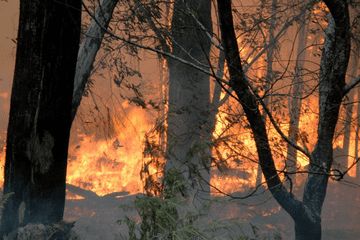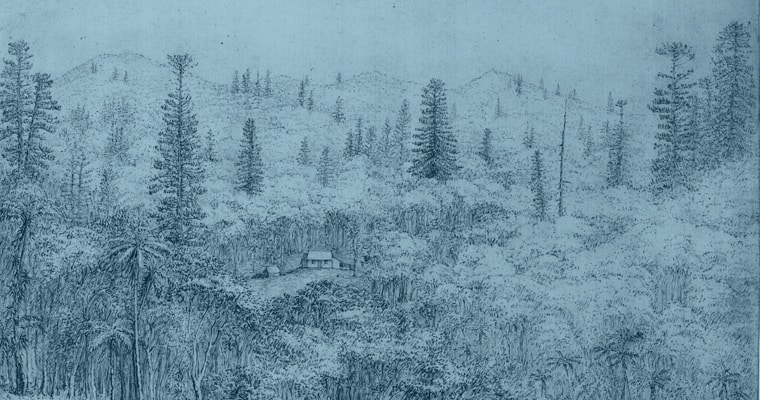This document outlines initiatives and policies for the next Australian Government to keep our native wildlife safe from new and established invasive species.
There’s a federal election slated for May 2022.
And if the pandemic has taught us anything, it’s just how vulnerable our island nation is to the world around us.
Invasive species like yellow crazy ants, carp, myrtle rust, gamba grass, feral deer and horses are running riot in the Australian environment.
In the past 13 years, five native species have gone extinct in the wild or extinct altogether. Four of those extinctions were due to invasive species.
The economic costs of invasive species are also staggering – an estimated $25 billion a year, more than 1% of Australia’s GDP.
We need strong leadership to deliver a concerted effort at tackling invasive species that are already within our border, while also working hard to prevent new invaders.
The vision these priorities paint is ambitious, but achievable. It will take strong leadership from the incoming government to make it our much-needed reality.
- Download the full report: Tackling deadly threats to nature; Biosecurity priorities for the next Australian Government
Executive Summary:
COVID-19 has taught the world a lesson about invasive species – their ability to spread, create havoc in unexposed populations and evolve to exploit our vulnerabilities.
As an island nation with a trove of unique wildlife that evolved in isolation from the rest of the world, Australia has proved highly susceptible to biological invasions. They have caused the majority of species extinctions over the last 230 years and remain the highest impact threat.
Our mega-biodiverse country – one of only a few on the planet – is in the grips of an extinction crisis. Since 2009, 3 unique animals have been wiped out and 2 others lost from the wild. Four of these recent extinctions were due to invasive species. Hundreds more native species, including more than half our nationally listed threatened species, are imperilled by invasive species. The economic costs of invasive species are also staggering – an estimated $25 billion a year, more than 1% of Australia’s GDP.
For such reasons, strengthening biosecurity – stopping new invasive species arriving and establishing and limiting the harm caused by established invaders – must be an Australian government priority of the highest order. While stopping invasive species is often difficult, past achievements show that with dedication and resources, Australia can achieve world-leading results. We have, for example, eradicated several red fire ant populations, as well as rats and cats from many islands, and beaten back terrible weeds through biocontrol or concerted removal (bitou bush, sea spurge and prickly pear, for example). So far, we’ve been able to keep out destructive new invaders such as the Asian black-spined toad, giant African snail and wattle rusts.
But in many places invasive species are running riot. To protect and restore Australia’s ecosystems, we need a more concerted effort to tackle the likes of feral cats, yellow crazy ants, carp, myrtle rust, gamba grass and hard-hoofed invaders such as feral deer and horses. We also need stronger, more collaborative, better funded biosecurity to prevent and eradicate new invaders and stop the spread of others.
Extinction is a choice – a choice expressed in the laws passed by governments, the money invested in protection or destruction and the actions we all take. Collectively, Australians can choose to ensure that Australia’s unique species persist and thrive.
In this document, we outline initiatives and policies to improve Australia’s capacity to keep nature safe from new and established invasive species. It is not a simple task – it will take concerted action and an ambitious, long-term vision shared by all parts of society, with strong leadership by our national government.
Some of the key actions we are calling on the next Australian Government to deliver are:
- Commit to the 2021-2030 Decade of Biosecurity initiative and guarantee long-term federal funding for the implementation of a collaboratively developed national biosecurity strategy.
- Commit to the eradication of yellow crazy ants in northern Queensland, red fire ants in South East Queensland and feral deer in the Tasmanian Wilderness World Heritage Area.
- Invest in and support measures to control the impacts of feral and domestic cats, gamba grass and hard-hooved invaders, including feral horses in the Australian Alps.
- Reform conservation planning instruments under Australia’s EPBC Act to ensure that key threats to nature are adequately addressed and threat abatement is progressed as a priority.
- Commit to establishing an independent panel to develop new models for financing biosecurity measures and responses.
- Establish a Productivity Commission inquiry into the economic and environmental benefits of prevention of, and early action on, invasive species.
- Expand the role of the Centre for Invasive Species Solutions so it becomes a permanent body that conducts research across all categories of invasive species and all stages of invasion with a strong emphasis on environmental biosecurity.
- Fully implementing the National Environment and Community Biosecurity Research, Development and Extension Strategy 2021-2026 with a focus on difficult high-priority problems and emerging technologies.









